Service Tiers Explained: Essentials, Premium, and Luxury
Service tiers in virtual staging in NYC align scope, speed, and finish with listing goals.
Table: Core specs by tier
| Tier | Price per photo | Turnaround | Resolution | Revisions | Rooms per set | Add‑ons available |
|---|---|---|---|---|---|---|
| Essentials | $18–$35 | 12–36 hours | 2K–3K px | 1 round | 1–2 | Basic decor, day-to-dusk |
| Premium | $36–$75 | 24–48 hours | 3K–5K px | 2 rounds | 2–4 | Item swaps, minor edits |
| Luxury | $76–$150+ | 48–96 hours | 5K–8K px | 3 rounds | 3–6 | Custom furniture, advanced retouching |
Essentials
- Target entry listings, for example, studios and 1-bed rentals in walkups.
- Deliver fast staging for volume updates across platforms.
- Include core decor sets, for example, modern and transitional.
- Support basic cleanups, for example, wall scuffs and cord removal.
- Fit budget marketing, if cost per photo drives the plan.
Premium
- Target mid-market condos and co-ops from $750K–$2M.
- Deliver broader style libraries, for example, Scandinavian, industrial, Japandi.
- Include item swaps and layout tweaks for better flow in tight rooms.
- Support light virtual renovations, for example, paint and fixture refresh.
- Fit agent brand standards, if consistency across listings matters.
Luxury
- Target new development, townhouses, and penthouses above $2M.
- Deliver bespoke sets with custom furniture, art curation, and textiles.
- Include advanced retouching, for example, window view correction and HDR blending.
- Support architectural edits, for example, fireplace inserts and kitchen reface mockups.
- Fit design-forward marketing, if editorial-grade imagery anchors the campaign.
Quality and compliance notes
- Disclose digital alterations in captions for MLS and portals, if images include material changes, per New York State DOS advertising guidance and REBNY RLS policy (DOS 175.25, REBNY RLS Content Policy).
- Maintain accurate room dimensions and permanent features across tiers, if photos inform purchase decisions, per FTC truth-in-advertising standards.
Selection cues by property and goal
- Match tier to buyer intent, for example, rentals favor Essentials and end-user sales favor Premium.
- Match tier to acquisition cost, for example, Luxury pairs with high CPC campaigns and print spreads.
- Match tier to timeline, for example, Essentials supports 24-hour relaunches and Luxury supports staged launches.
- Expect higher engagement lifts from styled rooms that mirror target demographics, if NAR 2023 buyer data on staging relevance applies to your segment (NAR Profile of Home Staging 2023).
- Expect faster DOM reductions in competitive submarkets, for example, Long Island City and Williamsburg, if pricing and photography remain aligned with comps.
Turnaround Times and Revision Cycles That Fit NYC Pace
Tiered timelines for virtual staging in NYC
Expect fast cycles that match listing velocity in New York City. Essentials, Premium, and Luxury tiers carry distinct clocks.
| Service tier | Standard turnaround | Rush turnaround | Revisions included | Cutoff for same-day start | Weekend coverage |
|---|---|---|---|---|---|
| Essentials | 24–48 hours | 6–12 hours | 1 round | 2 pm ET | Limited |
| Premium | 48–72 hours | 12–24 hours | 2 rounds | 12 pm ET | By request |
| Luxury | 3–5 business days | 24–48 hours | 2–3 rounds | 10 am ET | By request |
More facts:
- BoxBrownie lists 48-hour standard delivery for virtual staging, Spotless Agency advertises 24-hour delivery for basic sets, Virtual Staging Solutions cites 24–48 hours for most orders.
Rush rules that protect launch dates
Plan rush windows around studio queues. Same-day start applies after orders land before posted cutoffs. Overnight delivery applies after asset quality passes intake checks.
- Set rush eligibility with image specs like 3000 px on the long edge and 72–300 dpi.
- Set file delivery on cloud links like Box, Dropbox, or Google Drive.
- Set shot counts per batch like 4–12 rooms per order.
- Set room priorities like living room first then kitchen then primary bedroom.
Revision cycles that keep design accurate
Use edits to confirm buyer fit. Minor changes cover decor swaps and color tweaks. Major changes cover angle changes and layout re-stage.
| Edit type | Included in tier | Typical scope | Added time |
|---|---|---|---|
| Minor visual tweak | All tiers | Color, decor, rug, art | 2–6 hours |
| Furniture swap | Premium, Luxury | Sofa, bed, table | 6–12 hours |
| Angle or crop change | Premium, Luxury | Re-render from same scene | 12–24 hours |
| Full re-stage | Luxury | New concept and layout | 24–48 hours |
Operational cadence that fits NYC releases
Align production with listing go-live dates on MLS and portals.
- Map milestones to calendar dates like intake day 0, proof day 1, revision day 2, final day 3.
- Lock photo capture 24 hours before intake to preserve clocks.
- Tag rooms with SKU-like labels like LR-01, KIT-01, PB-01 to speed feedback.
- Bundle comments with frame-accurate notes like 00-00-03 for each image hotspot.
- Approve finals in one block to avoid queue resets.
Constraints that impact delivery speed
Control inputs to keep service-level timing consistent across building types and unit stacks.
- Provide daylight-balanced photos for interiors, provide clear exteriors for façade swaps.
- Provide floor plans with dimensions for Luxury, provide key elevations for built-ins.
- Provide style references like Scandinavian or Transitional, provide target buyer personas like first-time condo or luxury rental.
- Provide no more than 2 HDR brackets per angle, provide RAW files only when asked.
Add-Ons: Twilight Conversions, Day-to-Dusk, and Decluttering
Twilight conversions enhance exterior emotion and add contrast in dense streetscapes. Providers convert bright exteriors into blue hour ambience using sky swaps, window glows, and light reflections. NYC listings see stronger first impressions from twilight hero images if the primary photo ranks in carousel position 1 to 3. Disclose digital alterations in captions per New York Department of State advertising guidance and keep property attributes accurate, including lot line lighting and views (NY Department of State, 2018).
Day-to-dusk upgrades brighten curb appeal without a new shoot. Editors fuse late-day color grading with shadow control to boost depth on north-facing facades and courtyard units. Brokers pair day-to-dusk with vertical corrections for Manhattan walk-ups and prewar co-ops. Note that edited skies can’t misrepresent directionality, views, or permanent lighting elements under truth-in-advertising standards (NY Department of State, 2018).
Decluttering removes distractions that cap perceived size in small rooms. Teams erase items like refrigerator magnets, pet bowls, and moving boxes, then balance surfaces for realistic textures. Agents use light declutter for lived-in rentals and deep declutter for estate sales. Keep fixed elements like radiators, window frames, and structural columns intact to comply with material accuracy rules (NAR Code of Ethics, 2023).
More facts appear in Article 43 Overview for virtual staging in NYC.
Add-on comparisons for NYC listings
| Add-on | Primary use cases | Typical price per image in NYC | Standard turnaround | Best tier fit | Compliance note |
|---|---|---|---|---|---|
| Twilight conversion | Exteriors, roof decks, garden-level yards | $10–$35 | 12–24 hours | Premium, Luxury | Disclose sky swaps and lighting edits (NY DOS, 2018) |
| Day-to-dusk | Facades, terraces, city views | $8–$30 | 12–24 hours | Essentials, Premium | Avoid false sunsets that imply view corridors (NY DOS, 2018) |
| Light declutter | Kitchens, baths, entry halls | $12–$25 | 24–36 hours | Essentials, Premium | Retain fixtures and built-ins (NAR, 2023) |
| Deep declutter | Living rooms, bedrooms, basements | $25–$60 | 24–48 hours | Premium, Luxury | Flag removed items in caption if material (NY DOS, 2018) |
Execution tips for fast NYC cycles
- Set add-on scope in the intake brief with room lists, example angles, and caption language.
- Set realistic ceilings on edit depth for rent-stabilized or landmarked units.
- Set rush eligibility by photo count, complexity level, and go-live date.
- Set revision paths that separate color grading, object removal, and sky choice.
Contextual pairing with service tiers
- Pair twilight with Premium hero images on townhouses, new condos, and penthouses.
- Pair day-to-dusk with Essentials upgrades on studios, one-bed rentals, and co-ops.
- Pair light declutter with Essentials kitchens, baths, and entry halls.
- Pair deep declutter with Luxury living rooms, primary suites, and great rooms.
Quality safeguards that maintain accuracy
- Use consistent shadow direction across edits if multiple angles show the same facade.
- Use window glow levels that match interior brightness from staged rooms.
- Use sky palettes that reflect seasonal sunsets for NYC latitude.
- Use captions that state “digitally enhanced” for any altered photo, then link to unedited images when feasible (NY DOS, 2018).
Impact notes with sources
- Photos rank as the most useful listing content for buyers, above detailed descriptions (NAR, 2023).
- Virtual enhancements increase online attention when edits remain truthful and clearly disclosed (NAR, 2023, NY DOS, 2018).
- New York Department of State, Real Estate Advertising Advisory, 2018.
- National Association of Realtors, Home Buyers and Sellers Generational Trends Report, 2023.
Quality Controls: Photogrammetry, Scale, and Shadow Realism
Photogrammetry anchors accurate geometry in virtual staging in NYC. Teams extract camera pose from EXIF, lens model, and room references, then they solve scene scale with control points. Providers run checks that tie renders to true dimensions, then they log results for audits and MLS disclosure compliance per New York State advertising guidance (New York Dept of State, FTC).
Photogrammetry workflow
- Capture: Request native-resolution photos, lens make and model, and EXIF intact.
- Calibrate: Solve focal length, sensor size, and lens distortion from EXIF, checkerboards, or straight-line constraints.
- Reconstruct: Derive vanishing points, horizon line, and camera height from orthogonal edges, doors, and windows.
- Validate: Cross-check door slabs, countertop heights, and outlet centers against known standards and onsite measures.
- Document: Store calibration files, scale notes, and render settings in the project record for RLS audits.
Scale enforcement
- Measure: Use two or more ground-truth spans, for example room width, ceiling height, and window rough opening.
- Constrain: Lock a unit scale in 3D before asset placement and lighting.
- Compare: Overlay dimension lines on previews for client signoff against floor plans.
- Control: Flag scale drift when furniture legs, seat heights, and table tops misalign with baseboards and sill heights.
- Record: Attach a scale certificate to the delivery pack for listings that include floor plans.
Shadow realism
- Match: Align shadow azimuth with sun position for exteriors and key light direction for interiors using the NREL SPA model.
- Balance: Blend key light, fill light, and ambient occlusion so contact shadows read natural around chair feet and rug edges.
- Soften: Set penumbra size based on fixture type and distance, then keep softness consistent across the scene.
- Ground: Bake contact shadows at furniture-floor junctions to avoid floating artifacts in reflective wood or polished tile.
- Check: Compare cast angles to window mullions and sill lines to confirm consistent geometry.
Operational audits
- Sample: Review 10% of weekly jobs, then escalate any scale or light mismatches to rework.
- Verify: Run metadata checks for EXIF integrity and color space, then confirm MLS size limits for StreetEasy and REBNY feeds.
- Disclose: Mark images as virtually staged and state material edits per FTC guidance and New York advertising rules.
- Train: Refresh artists on ASPRS positional accuracy concepts and interior lighting basics each quarter.
- Track: Log defect types, for example scale, lighting, and occlusion, and publish trend reports to clients.
QC thresholds and deliverables
| Metric | Target | Method | Notes |
|---|---|---|---|
| Long-edge resolution | 3000 to 4096 px | Export setting | Fits common MLS limits in NYC feeds |
| Scale error vs ground truth | ≤ 2% | Two-point measure | Based on door slab 80 in and ceiling 96 to 108 in |
| Vanishing point deviation | ≤ 0.5° | Line fit | Checks verticals on casework and jambs |
| Focal length variance | ≤ 2% | EXIF vs solve | Flags phone lens metadata errors |
| Shadow azimuth delta | ≤ 10° | Vector compare | Uses sun or key light direction |
| Contact shadow lift | ≤ 2% above floor luminance | Pixel probe | Prevents floating furniture |
| Noise on composites | ≤ 5% NR | Denoise pass | Keeps fabric texture intact |
| Color space | sRGB IEC61966-2.1 | Export profile | MLS safe, web safe |
Data sources
- New York Dept of State, Real Estate Advertising, https://dos.ny.gov/real-estate-advertising
- Federal Trade Commission, Advertising and Marketing on the Internet, https://www.ftc.gov
- NREL Solar Position Algorithm, https://www.nrel.gov
- ASPRS Positional Accuracy Standards for Digital Geospatial Data, https://www.asprs.org
Provider selection cues for quality
- Ask: Request a sample job with scale overlays and calibration notes.
- Inspect: Look for contact shadows, consistent light direction, and zero lens warp on verticals.
- Confirm: Verify a written QC checklist and audit cadence tied to service tiers.
- Align: Map QC thresholds to Essentials, Premium, and Luxury, then match to listing goals and timelines.
- Compare: Check disclosure language across all delivered images for consistent compliance.
- Virtual staging in NYC depends on room scale accuracy in tight layouts and small bedrooms.
- Virtual staging services gain credibility when photogrammetry and shadow realism match real rooms.
- Detailed view of pricing and timelines stays intact when QC gates catch rework early.
Pricing Structures by Unit Type and Image Volume
NYC pricing scales by unit type, because room count and complexity drive design scope.
- Studios: Essentials $20–$35 per image, Premium $35–$60 per image, Luxury $60–$120 per image.
- One-bedrooms: Essentials $25–$40 per image, Premium $45–$70 per image, Luxury $70–$140 per image.
- Two-bedrooms: Essentials $25–$45 per image, Premium $50–$80 per image, Luxury $80–$160 per image.
- Three-bedrooms: Essentials $30–$50 per image, Premium $55–$90 per image, Luxury $90–$180 per image.
- Townhouses: Essentials $30–$55 per image, Premium $60–$95 per image, Luxury $100–$200 per image.
- Luxury penthouses: Essentials $35–$60 per image, Premium $70–$110 per image, Luxury $120–$240 per image.
NYC providers anchor image volume tiers to accelerate large campaigns, because brokerages batch listings across neighborhoods.
- 1–10 images: Base rate per image by tier, examples include living room, bedroom, kitchen.
- 11–25 images: 5–10% discount on per-image rate, examples include alternate angles, vignettes.
- 26–50 images: 10–15% discount on per-image rate, examples include amenity rooms, lobbies.
- 51–100 images: 15–20% discount on per-image rate, examples include multi-unit releases, model lines.
- 101+ images: Custom quote with service-level guarantees, examples include new development drops.
Rate components in virtual staging in NYC align with tier deliverables, because decor libraries, retouching depth, and QA differ by scope.
- Base staging: Furniture placement, color harmony, scale checks.
- Structural edits: Wall paint, fixture swaps, minor layout cleanup.
- Heavy retouching: Object removal, advanced declutter, window view repair.
- Add-ons: Day-to-dusk, twilight, sky replacement.
Estimated price bands by unit type and volume
| Unit type | Tier | 1–10 imgs (per img) | 11–25 imgs | 26–50 imgs | 51–100 imgs | 101+ imgs |
|---|---|---|---|---|---|---|
| Studio | Essentials | $20–$35 | $19–$33 | $18–$31 | $16–$30 | Quote |
| Studio | Premium | $35–$60 | $33–$57 | $31–$54 | $28–$51 | Quote |
| Studio | Luxury | $60–$120 | $57–$114 | $54–$108 | $48–$102 | Quote |
| 1BR | Essentials | $25–$40 | $24–$38 | $23–$36 | $20–$34 | Quote |
| 1BR | Premium | $45–$70 | $43–$66 | $41–$63 | $36–$59 | Quote |
| 1BR | Luxury | $70–$140 | $66–$133 | $63–$126 | $56–$119 | Quote |
| 2BR | Essentials | $25–$45 | $24–$43 | $23–$41 | $20–$38 | Quote |
| 2BR | Premium | $50–$80 | $48–$76 | $45–$72 | $40–$68 | Quote |
| 2BR | Luxury | $80–$160 | $76–$152 | $72–$144 | $64–$136 | Quote |
| 3BR | Essentials | $30–$50 | $29–$48 | $27–$45 | $24–$42 | Quote |
| 3BR | Premium | $55–$90 | $52–$86 | $49–$81 | $44–$77 | Quote |
| 3BR | Luxury | $90–$180 | $86–$171 | $81–$162 | $72–$153 | Quote |
| Townhouse | Essentials | $30–$55 | $29–$52 | $27–$50 | $24–$47 | Quote |
| Townhouse | Premium | $60–$95 | $57–$90 | $54–$86 | $48–$81 | Quote |
| Townhouse | Luxury | $100–$200 | $95–$190 | $90–$180 | $80–$170 | Quote |
| Penthouse | Essentials | $35–$60 | $33–$57 | $31–$54 | $28–$51 | Quote |
| Penthouse | Premium | $70–$110 | $66–$105 | $63–$99 | $56–$93 | Quote |
| Penthouse | Luxury | $120–$240 | $114–$228 | $108–$216 | $96–$204 | Quote |
Common surcharges in New York City campaigns
- Rush delivery: 1.25x–2x multiplier, when lead times fall under 24–48 hours.
- Advanced declutter: $15–$40 per image, when item removal exceeds 10 objects.
- Virtual renovation: $60–$200 per image, when structural illusions extend beyond paint or fixture swaps.
- Floorplan sync: $5–$15 per image, when providers align furniture to measured plans.
- Compliance labeling: $0–$3 per image, when MLS variants require overlays.
Bundling tactics that lower effective cost
- Room grouping: Living room plus primary bedroom plus kitchen, 3-image packs reduce 5–10%.
- Angle pairing: Wide shot plus detail crop, 2-image pairs reduce 3–5%.
- Development drops: 50+ images across stacks, tiered rebates fund future releases.
Benchmark references, for more facts and transparent baselines
- BoxBrownie public rate cards list $24–$64 per staged image, retrieved 2025-09, source boxbrownie.com.
- PadStyler public pricing spans $29–$79 per image, retrieved 2025-09, source padstyler.com.
- Phixer and VS24 publish volume discounts of 10–20% for 25+ images, retrieved 2025-09, sources phixer.io, virtualstaging24.com.
Pricing levers in virtual staging in NYC hinge on unit complexity and image counts, when providers lock SLAs and revision scopes.
File Delivery Standards for MLS, Portals, and Social
NYC file delivery aligns virtual staging in NYC with MLS feeds and consumer portals and social formats.
Output presets
- Export sRGB JPEG at 85 quality for web listings and portals and social
- Export PNG only for transparency cases like logo-free floorplan overlays
- Export TIFF only for print flyers at 300 PPI
Production specs
- Set long edge at 3000 px for masters then derive portal cuts
- Set aspect ratios at 4:3 and 3:2 for MLS and 16:9 and 1:1 and 4:5 for social
- Set max target size at 3 MB per image for fast syndication and safe uploads
Compliance flags
- Disclose virtual staging in the caption and in-image badge only if the MLS or portal requires it
- Remove watermarks and logos and agent text to meet MLS rules
- Preserve true wall lines and scale and do not alter permanent fixtures to meet advertising standards
MLS and NYC portal notes
- Follow REBNY RLS rules that ban branding overlays and require truthful representation of space [Source: REBNY RLS Universal Co‑Brokerage and Advertising Rules https://rebny.com]
- Follow OneKey MLS media rules that ban watermarks and text on photos [Source: OneKey MLS Media Policy https://onekeymlsny.com]
- Follow StreetEasy listing photo rules that ban promotional text and require accurate visuals [Source: StreetEasy Content Policy https://streeteasy.com]
- Follow Zillow photo policy that bans watermarks and text and promotes high resolution JPEG [Source: Zillow Help Center Photos https://zillow.zendesk.com]
- Follow Realtor.com feed standards that mirror originating MLS rules on branding and accuracy [Source: Realtor.com Listing Standards https://support.realtor.com]
Platform targets
- Create MLS cut at 2048×1536 4:3 for broad MLS compatibility if the feed downscales larger files
- Create portal cut at 3000×2000 3:2 for Zillow and Realtor.com hero images
- Create wide cut at 3840×2160 16:9 for Redfin galleries and smart TV apps
- Create square cut at 1080×1080 for Instagram grid
- Create portrait cut at 1080×1350 4:5 for Instagram and Facebook feeds
- Create story cut at 1080×1920 9:16 for Instagram and Facebook and TikTok teasers
- Create thumbnail cut at 1280×720 16:9 for YouTube and Vimeo cover frames
Metadata handling
- Strip GPS and author fields to protect seller privacy and brokerage data
- Embed sRGB IEC61966-2.1 profile to keep color stable across devices
- Embed descriptive ALT text and captions that include room name and style and disclosure
- Embed copyright with brokerage name only if platform allows it
NYC disclosure language
- Use Virtual staging for concept visualization only as a caption
- Use Furniture and decor are digitally added and dimensions remain unchanged as a caption
- Use No structural changes depicted as a caption
File naming
- Use address_borough_roomtype_style_sequence.jpg like 123Main_Manhattan_Living_Modern_01.jpg
- Use consistent room tags like Living and Bedroom and Kitchen and Bath for feed mapping
- Use tier tags like E and P and L for Essentials and Premium and Luxury when tracking costs
Revision delivery
- Send full master set in a ZIP and send platform cuts in a second ZIP if the client posts to multiple channels
- Send MLS safe set without badges and send social set with subtle corner badges if policy allows them
- Send change log with file map and platform targets and dates
Quality gates
- Check long edge and aspect ratio and file size before upload
- Check shadows and perspective lines and furniture scale against baseline QC
- Check disclosure presence on all staged images before syndication
More facts
- sRGB keeps colors consistent on iOS and Android and web
- JPEG at 85 retains detail with lean file sizes for faster MLS feeds
- 4:5 portrait drives higher on-screen size in Instagram feeds per Meta image guidance [Source: Meta Help Center https://www.facebook.com/help]
Delivery matrix
| Channel | Format | Aspect ratio | Target pixels | Max size target | Notes |
| MLS feeds | JPEG sRGB | 4:3 or 3:2 | 2048×1536 or 3000×2000 | 3 MB | No branding and clear disclosure per MLS rules |
| Zillow and Realtor.com | JPEG sRGB | 3:2 | 3000×2000 | 3 MB | High resolution and no text overlays |
| StreetEasy | JPEG sRGB | 4:3 | 2048×1536 | 3 MB | Accurate visuals and no promotional text |
| Redfin | JPEG sRGB | 16:9 | 3840×2160 | 3 MB | Wide hero images for galleries |
| Instagram grid | JPEG sRGB | 1:1 | 1080×1080 | 1.5 MB | Sharp on mobile displays |
| Instagram and Facebook feed | JPEG sRGB | 4:5 | 1080×1350 | 1.5 MB | Taller portrait for visibility |
| Stories and Reels and TikTok | MP4 H.264 AAC | 9:16 | 1080×1920 | 30 MB | Use subtle motion pans only if allowed |
| YouTube thumbnail | JPEG sRGB | 16:9 | 1280×720 | 1 MB | Clear room label text only if platform allows |
- Standardize presets in Lightroom and Photoshop and Capture One across editors
- Centralize masters in a versioned cloud folder for quick re-cuts when portals change specs
- Time exports to match listing go-live and broker open dates and portal ad flights
- Track rejections by platform code to refine presets and reduce resubmits
Vendor Vetting: Portfolios, NDAs, and Usage Rights
Portfolios: how to assess capabilities for virtual staging in NYC
- Verify scale: compare furniture to door heights at 80–84 inches, compare sofa lengths at 72–90 inches, compare counter heights at 34–36 inches.
- Verify shadows: match window orientation to sun azimuth for Manhattan addresses, match shadow softness to overcast or direct light.
- Verify consistency: request 3–5 before and after pairs per room type, request kitchens, baths, bedrooms as examples.
- Verify disclosures: confirm “virtually staged” labels on all altered frames for MLS and portals, confirm labels sit inside image edges.
- Verify diversity: review 4–6 interior styles across prewar co‑ops, postwar condos, new development as examples.
- Verify realism: inspect reflections on glass, inspect fabric drape on beds, inspect grout lines in tile.
NDAs: what to lock down before asset transfer
- Use scope: define confidential items as listing photos, floor plans, addresses, access notes, client rosters.
- Use term: set confidentiality for 24–60 months, set survival for trade secrets beyond term.
- Use access: restrict vendor access to named staff, restrict subcontracting without written consent.
- Use security: require encrypted transfer via SFTP or SOC 2 platforms, require deletion confirmations on project close.
- Use PII controls: exclude tenant names from filenames, exclude lockbox codes from briefs.
- Use remedies: include injunctive relief language, include audit rights for data handling.
- Use compliance: align advertising accuracy with New York State DOS guidance, align deceptive edit avoidance with MLS policies. [Sources: New York State Dept of State, Advertising by Real Estate Licensees; OneKey MLS Media Policy]
Usage rights: how to license staged outputs without gaps
- Define authorship: treat staged outputs as licensed works, treat “work made for hire” only if contract meets 17 U.S.C. §101 limits. [Source: 17 U.S.C. §101]
- Define scope: grant license to broker of record, grant sublicense to seller, teams, portals.
- Define media: include MLS, brokerage sites, IDX, social, print, out‑of‑home as media.
- Define territory: set territory as United States, set cross‑border syndication as permitted.
- Define term: set 12–36 months or listing life, set archive and portfolio use as perpetual for vendor unless bought out.
- Define exclusivity: set nonexclusive by default, set exclusive within property address if paid.
- Define modifications: allow cropping and resizing, allow compliance labels, restrict style alterations without vendor consent.
- Define indemnity: include IP indemnity for third‑party assets, include cap at project value or 2x fees.
Third‑party assets: what to confirm about models and stock
- Confirm libraries: confirm furniture models from licensed libraries like Design Connected, 3dsky, TurboSquid, confirm texture sources from Poliigon, Arroway as examples.
- Confirm stock: confirm any people or sky swaps carry commercial licenses from Getty or Adobe Stock, confirm license IDs in the job ticket.
- Confirm trademarks: remove branded logos on appliances and art, remove copyrighted art not cleared for commercial display. [Source: 17 U.S.C. §106]
- Confirm releases: confirm property owner consent for photo use via listing agreement, confirm no identifiable residents without a model release. [Source: REBNY RLS Universal Co‑Brokerage Agreement]
MLS and portal alignment: what keeps usage compliant
- Include labels: place “virtually staged” in‑image, place label in a legible sans serif at 18–24 px.
- Match facts: reflect accurate room dimensions, reflect immovable elements like columns and windows. [Source: New York State Dept of State, Advertising Guidance]
- Avoid misrepresentation: avoid removing permanent defects, avoid adding fixtures that do not exist like fireplaces, skylights. [Sources: OneKey MLS, StreetEasy Photo Guidelines]
Negotiation levers: what to ask for in contracts
- Request proofs: request 2–3 watermarked proofs per image for review, request 1–2 revision rounds inside scope.
- Request file rights: request master JPGs at 3000 px long edge, request layered PSD or EXR only if buying out rights.
- Request portfolio limits: request blackout on vendor portfolio use until sale closes, request address redaction in case studies.
- Request data limits: request deletion of raw files within 30–90 days post close, request log of deletions.
Red flags: what to filter out during vendor selection
- Reject mis‑scale: reject beds that float, reject rugs that clip baseboards, reject shadows that oppose window direction.
- Reject vague rights: reject licenses without term, territory, media, or indemnity, reject “all rights reserved” without usage grant.
- Reject insecure transfer: reject email attachments for masters, reject public links without expiry or password.
- Reject non‑disclosure: reject portfolios that omit labels on staged frames, reject claims of “unlimited revisions” without SLA.
Key figures and contract norms
| Topic | Typical Range | NYC Context |
|---|---|---|
| Portfolio pairs per room type | 3–5 | Request kitchens, baths, bedrooms |
| NDA confidentiality term months | 24–60 | Extend for celebrity listings |
| PII retention days post close | 30–90 | Shorten for rentals |
| License term months | 12–36 | Match listing life plus archive |
| Vendor proof rounds per image | 1–2 | Add 1 round for Luxury tier |
| Indemnity cap | 1x–2x fees | Lift cap for enterprise clients |
RFP prompts: what to ask to validate More facts
- Ask origins: ask for a list of 3D libraries and stock sources with license types, ask for sample license IDs.
- Ask pipeline: ask for software stack like 3ds Max, Blender, V‑Ray, Photoshop, ask for color management settings like sRGB IEC61966‑2.1.
- Ask compliance: ask for the exact disclosure label used, ask for references to DOS, REBNY, and MLS rules in their SOPs. [Sources: New York State DOS, REBNY RLS]
- Ask security: ask for SOC 2 or ISO 27001 status, ask for data disposal workflow and logs.
Practical checklist: how to finalize vendor selection for virtual staging in NYC
- Confirm portfolio: confirm scale accuracy, confirm disclosure compliance across at least 10 images.
- Confirm NDA: confirm scope, term, access, deletion, remedies in one signed PDF.
- Confirm license: confirm parties, term, media, territory, exclusivity, indemnity in clear language.
- Confirm releases: confirm seller consent via listing agreement, confirm no unlicensed third‑party art or people.
- Confirm deliverables: confirm formats for MLS, portals, social from the delivery matrix above.
- Confirm escalation: confirm response time under 24 hours on business days, confirm rush path for contract‑out listings.
- New York State Department of State, Advertising by Real Estate Licensees, dos.ny.gov
- 17 U.S.C. §101 and §106, U.S. Copyright Office, copyright.gov
- REBNY RLS Universal Co‑Brokerage Agreement and RLS Rules, rebny.com
- OneKey MLS Media and Photo Policy, onekeymlsny.com
- StreetEasy Photo and Media Guidelines, streeteasy.com

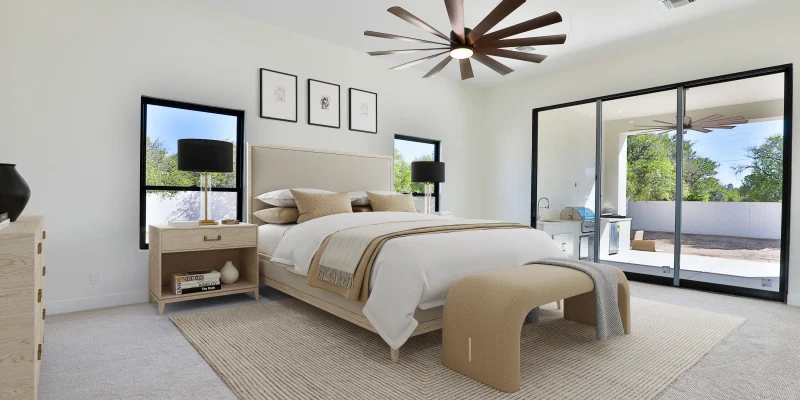


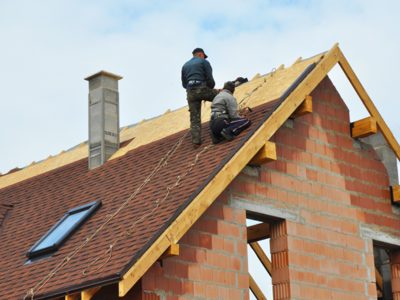
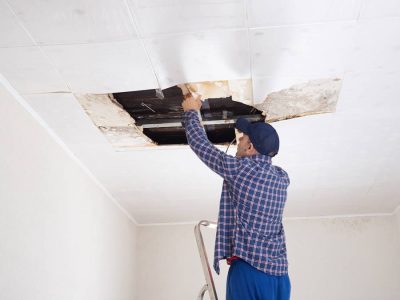

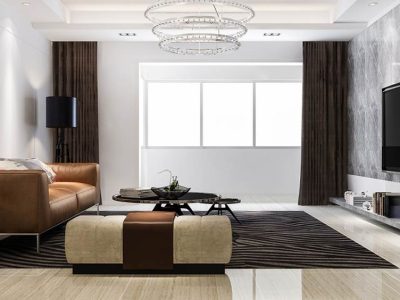



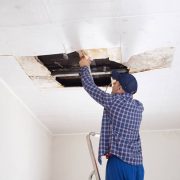

Comments